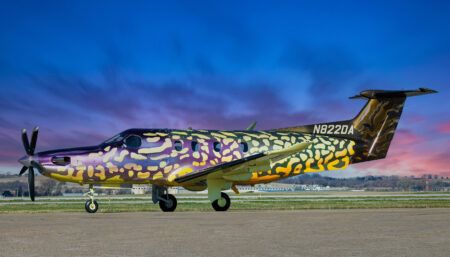Gulfstream’s new vice president of mid-cabin programs discusses the G150 and G280
How successful have Gulfstream’s G150 and G280 programs been to date?
The G150 and G280 programs have been extremely successful. Let’s start with the G150. With more than 100 aircraft in service around the world, the G150 continues to demonstrate its superior dispatch reliability and availability, with the best range, speed and fuel efficiency in the midsize class of business jets. In February 2013, we celebrated a milestone for the G150 fleet leaders, which had combined to surpass 10,000 flight hours in just five years. The G150 fleet is located in the USA, Canada, Central America, South America, Europe and Asia.
The G280 has had tremendous success in the marketplace, already there are more than 50 of these aircraft in service around the world. The aircraft has demonstrated its tremendous capabilities by setting 49 city-pair speed records, including Paris, France, to New York, USA; Washington DC, USA, to Geneva, Switzerland; and Singapore to Abu Dhabi, UAE. With its 3,600 nautical mile range, the aircraft has demonstrated its true intercontinental reach. We’re delighted with our customers’ use of the aircraft and the tremendous feedback we’ve received from them about it.
How important is the midsize category to Gulfstream?
The mid-cabin category is integral to the Gulfstream portfolio. We talk a lot about selecting the right aircraft for the mission, so it’s important for us to offer our customers a full complement of aircraft that can respond to the full range of mission requirements. The G150 and G280 nicely supplement our large-cabin portfolio, with the super-midsize G280 providing a solid bridge between the more traditional mid-cabin market and that of the large-cabin. Taken as a whole, the Gulfstream fleet offers a broad range of aircraft to fulfill a wide variety of missions.
How healthy is the market in this category?
The mid-cabin market is getting better, so we’re extremely excited by the things we’re seeing. The G150, for example, is sold out through the first quarter of 2016. The G280 has been extremely popular as well. The G280 has had tremendous market acceptance, with aircraft positioned around the world, including China, Russia, Europe and Latin America. People are recognizing the tremendous capabilities of these aircraft.
Can you share any plans you have for these aircraft, particularly in terms of their interiors?
The G280 has only been in service for two years and is truly as relevant today as the day it entered service. The G280 offers an extraordinary Gulfstream cabin experience, with 19 large windows, a vacuum lavatory, 100% fresh air, a low cabin altitude and a full complement of technological innovations, such as HD entertainment, wi-fi, high-speed internet and the Gulfstream CMS.
How important are interiors in marketing midsize aircraft?
Aircraft interiors are an extremely important part of the sales process since the person making the aircraft purchase decision traditionally spends a lot of time in the cabin. They want to have all of the amenities necessary to ensure a productive cabin environment, so we need to make sure the aircraft is a viable business tool that meets their needs. Certainly, the aircraft’s reliability, safety and technology play a role in that, but it’s truly the cabin experience that often defines it for the customer.
What do customers want from midsize aircraft interiors?
Mid-cabin operators expect the same degree of customization, quality and functionality that our large-cabin operators do, and we give it to them. We use the same high-quality materials in our mid-cabin aircraft as we do in our large-cabin ones. We also offer very similar cabin capabilities, especially in terms of the G280, which benefitted a great deal from the G650 development program. Mid-cabin customers, much like their large-cabin counterparts, appreciate the ability to personalize their aircraft. In terms of configurations, the seven-passenger layout is the most popular for the G150 and the nine-passenger layout is the most popular on the G280. The top cabin feature customers request is connectivity.
How do you balance the need to innovate and offer choice in the cabin with certification requirements and time/cost targets?
We have a robust research and development team committed to bringing new technology to our customers. At Gulfstream, safety and quality take precedence over cost and schedule, so when it comes to balancing requirements, we weigh those factors accordingly. Gulfstream is an innovative company, so it’s not unusual for us to work with the regulatory authorities to certify heretofore-unseen technology. To get there, we often need to work with the authorities to develop special conditions and issue papers to define the requirements for certification that the current regulations don’t adequately address. We’ve done that quite successfully in the past and as a result have been able to introduce some novel technologies in our aircraft.
Looking back over your career before this new role, what has been your proudest moment?
When I look back at my career with Gulfstream, I am proudest of our certification of new technologies. For example, we were the first OEM to certify enhanced vision. We were also the first Part 25 OEM to certify synthetic vision as part of our flight decks. So, there’s always been a challenge to be the first to certify new technology and find ways to work with the regulatory authorities to get our products certified. I’ve always enjoyed those challenges.





